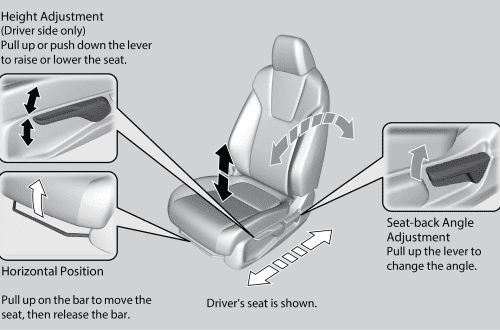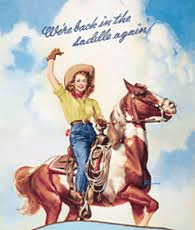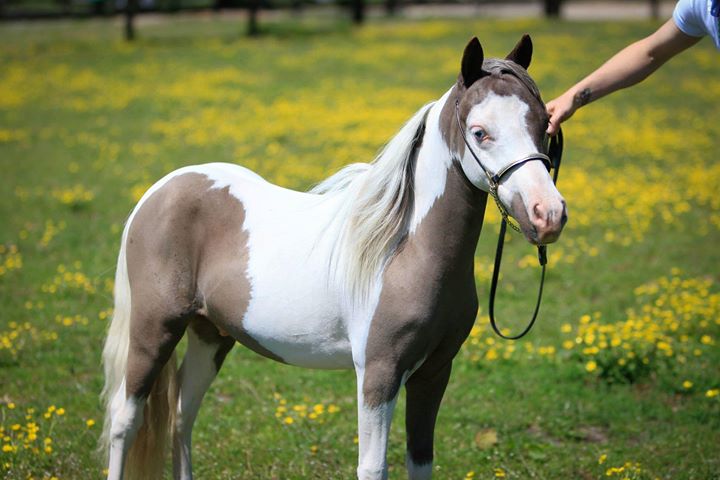
American miniature horses: not a dream, but a reality!
American miniature horses: not a dream, but a reality!
Miniature horses seem to us amazing fairy-tale creatures – they are so beautiful and graceful that it is hard to believe in their reality. These unusual animals seem to embody our hidden childhood dreams of a magical little friend. But the real miracle is that today these horses are no longer inaccessible. Excellent representatives of the breed can be purchased in Russia. And what opportunities these wonderful kids have!
A bit of history
Miniature horses have been known to people since ancient times. So, the remains of these animals were found in the tombs of the Egyptian pharaohs, and their images were found on Celtic stones.. From time immemorial, mini-horses have been kept as pets and presented as expensive gifts.
Modern mini-horses are the result of almost 400 years of work of breeders and have firmly taken their place not only in the hearts of fans of the breed, but also in the world of competitions and Show Championships. These animals are bred all over the world. An outstanding contribution to the breeding work was made by the farms of the USA, Australia, Great Britain, South Africa, Canada and New Zealand.
There are several breeds of miniature horses (for example, miniature Falabella, Appaloosa and Shetland pony), but the most famous, promising and rapidly developing of them was the American miniature horse, which was bred by those brought to America from Europe in the middle of the XNUMXth century. Shetland ponies and undersized representatives of some other breeds.
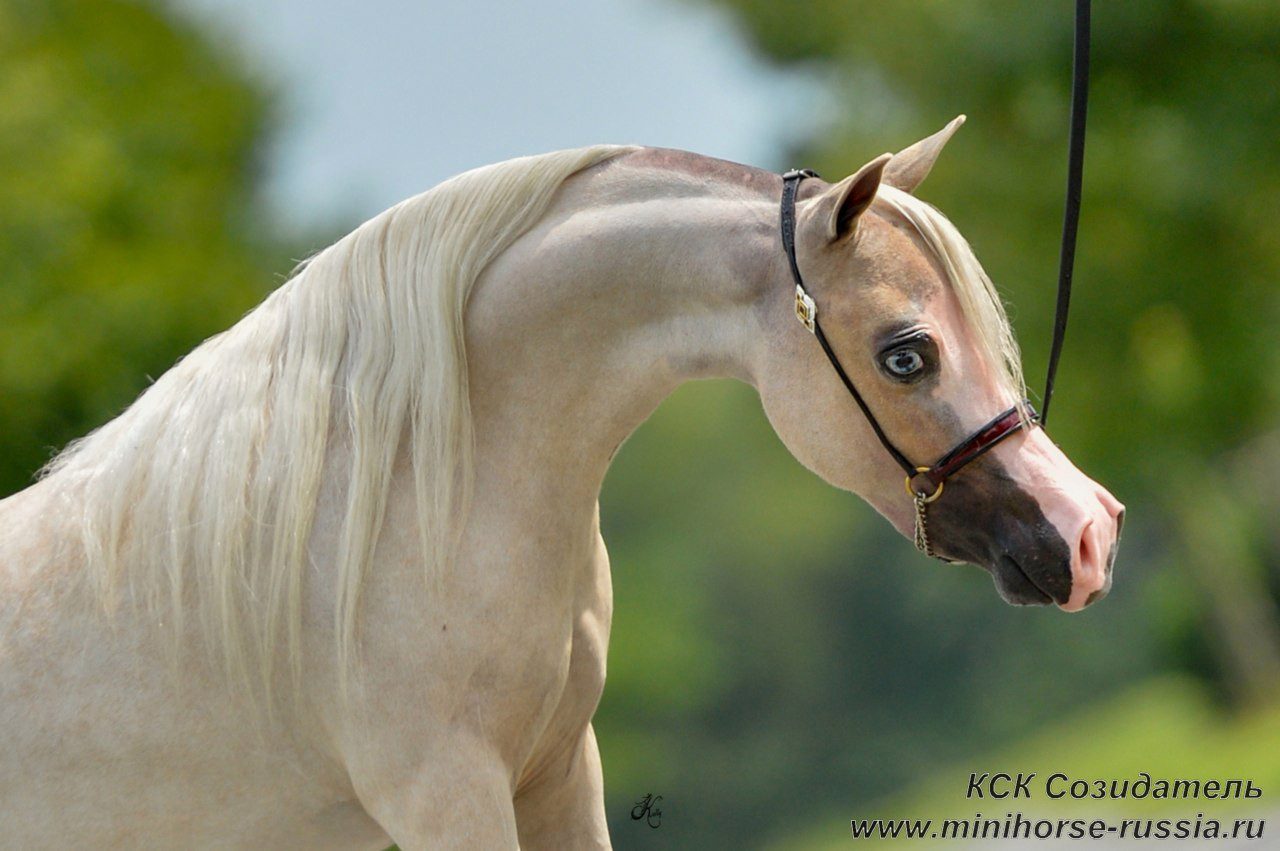
RFM AMIRS GYPSY GOLD — AMHA mare, multiple Grand Champion of AMHA show in Europe, Reserve Champion of Russia 2015 and 2016. Daughter of World Champion, granddaughter of Reserve World Champion and National Grand Champion. Born in the USA.
The registration of American Miniature Horses (AMHR) in 1972 was started by the American Shetland Pony Club, and in 1978 the American Miniature Horse Association (AMHA) was registered in the USA, which still maintains a studbook of the breed. The Association has over 12000 members from 30 countries.
In Russia, mini-horses were first registered at the All-Russian Research Institute of Horse Breeding in 2004. Only private farms are engaged in breeding these animals. And if today the number of mini-horses in the world is about 200, then in Russia there are only about 000 of them.
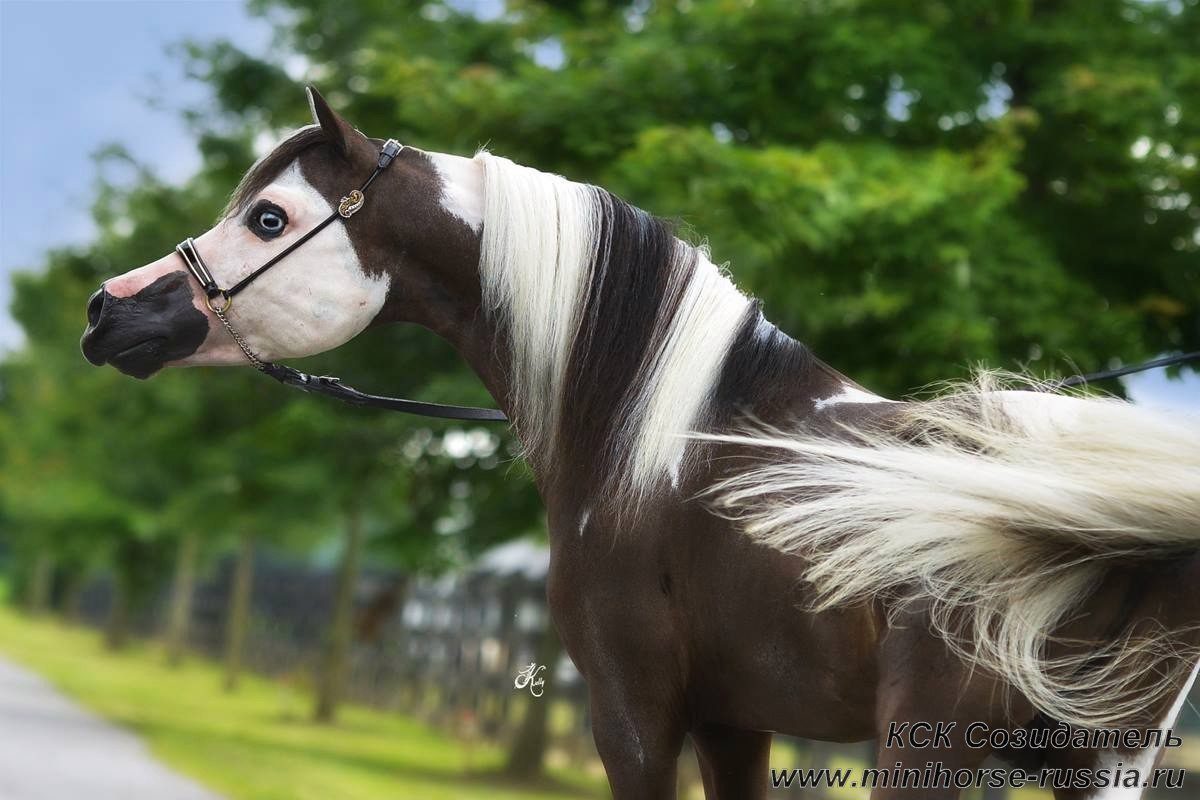
RFM THUNDERS INIKI — AMHA stallion, Reserve World Champion. Son of World Champions and grandson of Reserve World Champion. Born in the USA. Leading stallion of KSK “Creator”.
The fact is that due to the lack of exhibitions and shows with the participation of mini-horses, which are regularly held abroad, in our country these amazing animals are still considered exotic, despite the fact that they are quite affordable.
In February 2017, it was one year since the American Miniature Horse Association was recognized by the Russian Association of American Miniature Horses – RAAML – the only authorized organization engaged in the promotion and development of the breed in Russia. Its president, Elena Seregina, became the honorary director of AMHA.
Today, RAAML, operating on the basis of a horse farm established in the CSC “Sozidatel” in 2014, seeks to collect an elite composition of horses in Russia. AT The breeding stock of the farm has more than 50 heads imported from the USA, including three Reserve World Champions, American National Champion, European Champion, multiple AMHA Show Champions, descendants of World Champions.
Seminars and master classes are held under the auspices of RAAML. Owners of horses of this wonderful breed can receive assistance from the Association in the correct execution of documents for animals born in Russia, which can be entered in the AMHA studbooks. One of the goals of the Association is to prepare a Russian team of highly qualified judges and stewards for competitions involving horses of the breed.
In 2016, under the auspices of RAAML, KSK Sozidatel held the first Russian Championship according to the rules of AMNA, and in 2017 it is planned to hold the National Championship of Russia for all breeds of ponies and mini-horses.
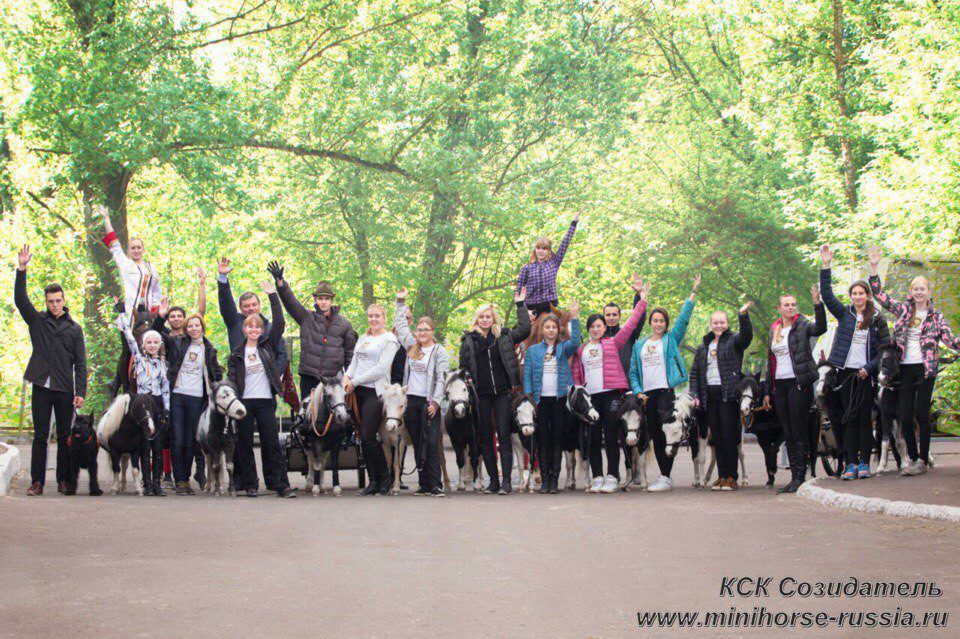
American miniature horses and the team of KSK “Creator”.
Exterior and character
The breeding work of breeders of American miniature horses is traditionally carried out with an emphasis on three qualities: good-naturedness, elegance and miniature.
The height of an adult animal at the withers should not exceed 86 cm.
When evaluating in the ring, if a situation arises where the characteristics of the two horses are almost the same, the preference is given to the smaller horse.
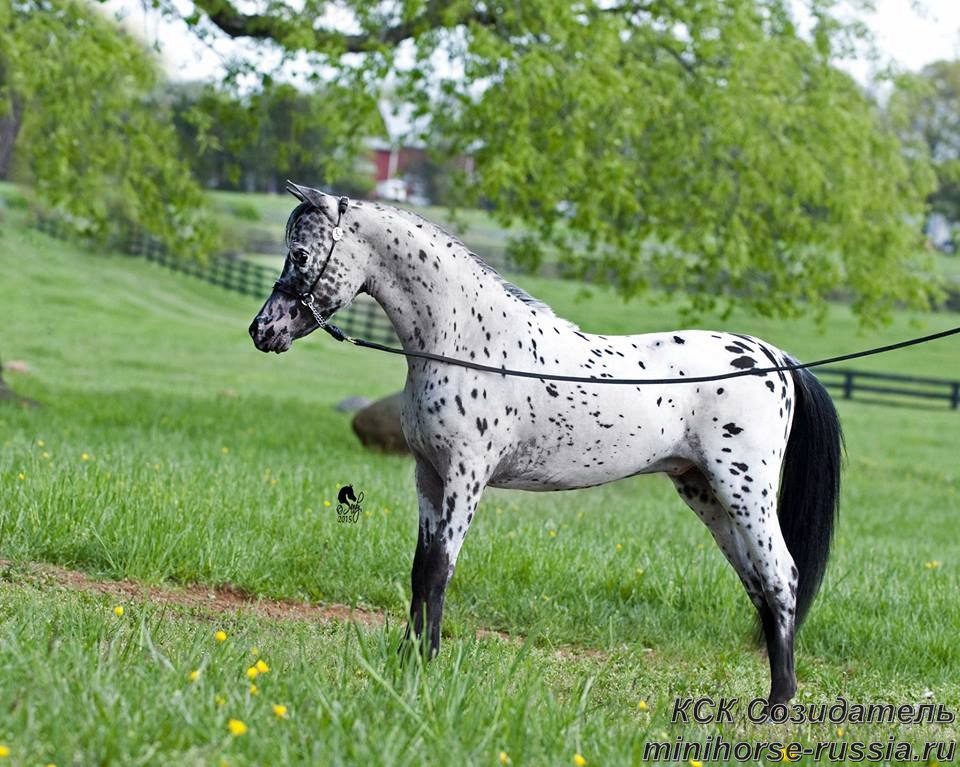
DRK TUXEDOS HEZA SPOTTED SENSATION – AMHA stallion, Reserve World Champion, grandson of 6 times World Champion. Born in the USA.
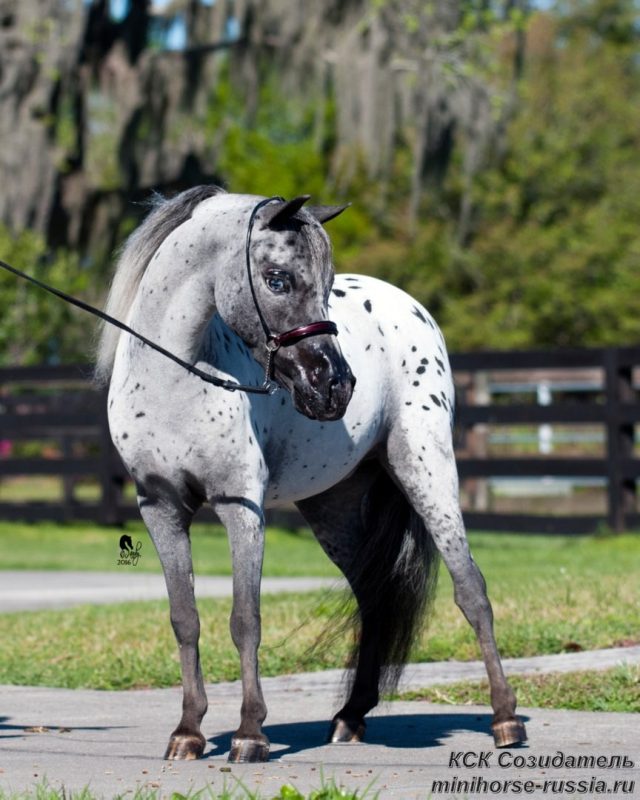
PLEASANT VIEWS IM SPOTTACUAL — AMHA mare, Reserve World Champion and American National Champion. Born in the USA.
American miniature horses are distinguished by the correct build characteristic of riding horse breeds: a light, broad-browed head with a slightly concave profile is proportional to the length of the neck and body. The profile is straight or slightly concave below the eyes. The eyes are large, expressive (any color is allowed). Large nostrils. Direct bite. The ears are of medium size, high, sensitive and as if alert, their slight inward bend is desirable. The neck is flexible, proportional to the body, smoothly passing into the withers. The shoulder is long, oblique, the setting is medium. Well muscled forearm. Balanced, proportional body has good bones. The loin is short and strong. The chest is deep and fairly wide. The croup is long, powerful and flows into a full thigh. The highest point of the croup should be at the level of the withers. The legs are straight, slender, with well-defined tendons. The hoof is round, compact. The average weight of a mini-horse is 65-70 kg. The movements are smooth, light, as if “flying”. There are no requirements for color and markings. Characteristic is a shiny and silky cover.
According to the Guinness Book of Records, Black Beauty is considered the smallest horse with a height of 47 cm at the withers. According to AMHA, Bond Tiny Tim was the smallest stallion in America – his height at the withers was 48,2 cm. Bond Tiny Tim was a pygmy horse and was widely used in breeding. He produced many national champions and passed on the dwarfism genes to generations of his descendants.
Mini-horses, unlike the usually aggressive ponies, are distinguished by good-naturedness and curiosity. They are happy to cooperate with people, easy to learn, get along with other pets and get along well with children.
Not just pets!
Despite their decorativeness and small size, American miniature horses are real athletes capable of performing in several classes: show jumping in the hands for jump power and style, driving, freedom (evaluation of horse movements in freedom), agility (competition for obedience and overcoming of non-standard obstacles), costumed classes, etc. A variety of categories of participants can compete with their pets – children, youths, adults, amateurs, persons with disabilities.
Mini horses lend themselves perfectly to training and training – they are easy to teach various tricks, so many representatives of the breed perform in circuses.
Despite their small size, these horses are quite hardy and are able to carry even an adult in a harness!
Good-natured and patient, mini-horses can be great play partners for children. Children from 6-8 months to 3-4 years old can even be ridden on them (the main thing is that the weight of the child does not exceed 35 kg). Mini-horses are indispensable in working with children with disabilities. With the help of mini-horses, children with cerebral palsy, autism, neuroses and other serious diseases are treated.
Abroad, mini-horses, which have passed special tests and are properly trained, have long been successfully replacing guide dogs.
Keeping American Miniature Horses
Keeping and caring for mini-horses is the same as ordinary horses need. Correction needs to be done only for the size of the animal. So, in an ordinary stall measuring 3 × 4 m, 2-3 miniature horses can comfortably accommodate. It should be noted that keeping horses in small groups in stalls is preferable for them than single – mini-horses have a calm disposition and get along well with each other, often even adult stallions calmly graze nearby and do not conflict with each other.
Like big horses, mini horses need cleaning, regular bathing, hoof trimming, dental care, vaccinations and deworming.
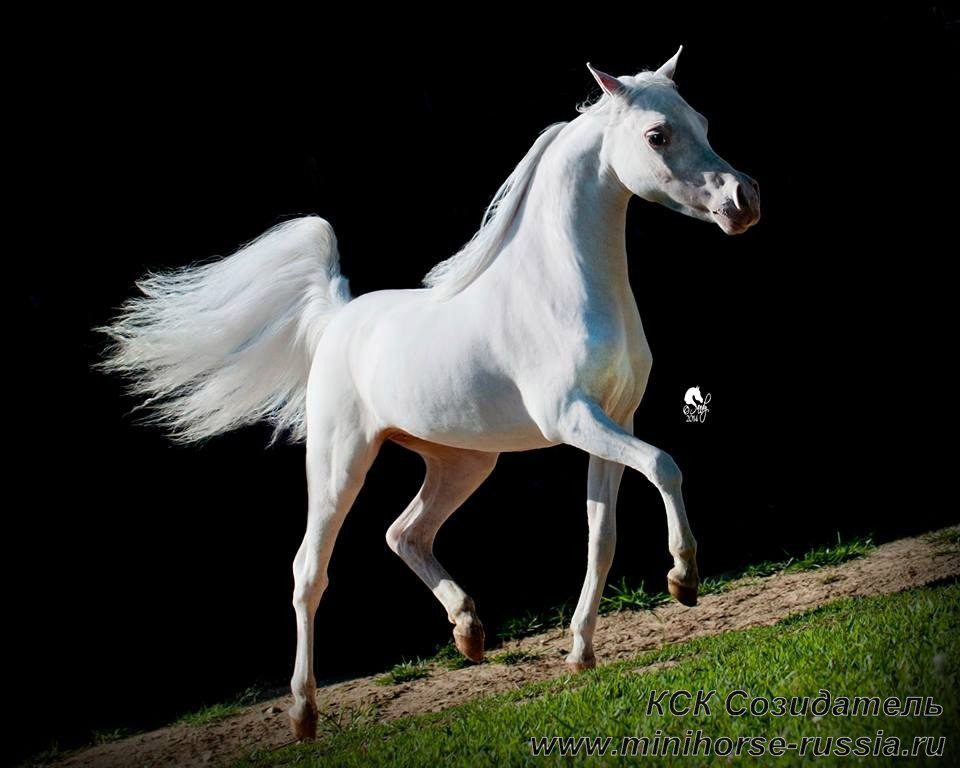
TEN LS ANGEL IN THE BUFF — AMHA mare, multiple AMHA Grand Champion in Europe, Champion of Russia. Daughter of the World Champion. Born in the USA.
Despite their apparent fragility, mini-horses are not sissies at all. In the presence of shelters and a small feeding with hay and concentrates, they feel great when grazing and, overgrown with thick wool by winter, they easily endure the cold. But, like big horses, babies need to be protected from drafts.
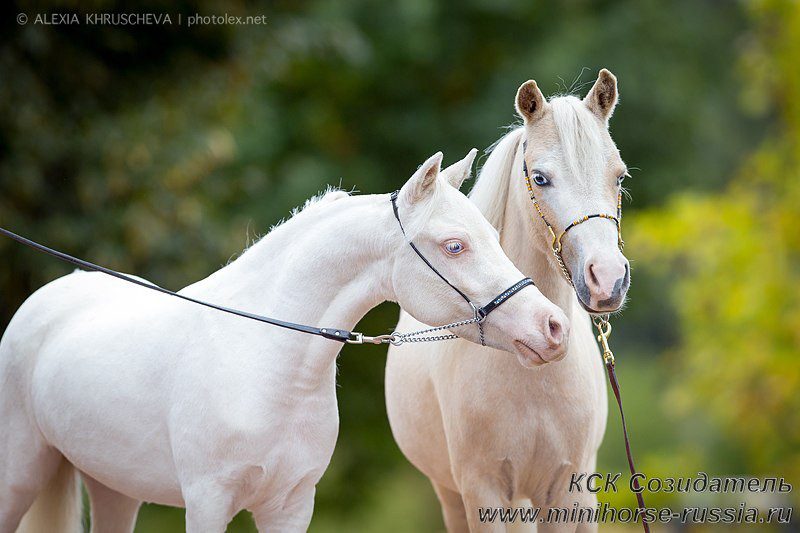
TEN LS ANGEL IN THE BUFF и RFM AMIRS GYPSY GOLD.
Surprisingly, mini-horses can be kept even in a house (better, of course, in a country house). In the West, special diapers and boots have been developed for such “pets” (so that the hooves do not click on the floor). But, when deciding to get a horse at home, remember that she needs regular long active walks.
The diet of a mini-horse should be varied. Roughage (hay, grass, grass meal) can make up the majority of the diet and be given ad libitum, but concentrates (grain, cereals, muesli, etc.) must be given with caution, in small quantities, since with insufficient physical activity mini Horses quickly get fat, acquiring a number of diseases associated with metabolism. In winter, as a treat, you can pamper mini-horses with apples and root crops. Both in grazing and stall keeping, one should not forget about mineral and vitamin supplements, since mini-horses are especially sensitive to a lack of nutrients and minerals in feed.
The rate of giving concentrates should be consistent with the weight category of the horse and the severity of the work performed by him. Thus, a horse that regularly works under a saddle or in a harness should receive an additional portion of concentrates, while a non-working horse can receive concentrates only as a treat.
Maria Mitrofanova.
Photos provided by KSK “Sozidatel” and RAAML. All the horses shown in the photo are part of the breeding stock of the KSK Sozidatel horse farm.



